The 2022 winners of the Ocean Photographer Of The Year competition have been announced, bringing to light arresting shots that demonstrate both the power, fragility, and alien nature of our oceans’ ecosystems. Hosted in by Oceanographic Magazine, the competition aims to celebrate the wildlife and organisms that keep the seas healthy while simultaneously highlighting the many plights they face.
Each year, Ocean Photographer Of The Year invites camera-happy people from across the globe to submit their marine photography. With categories representing the impact and hope surrounding conservation issues, as well as capturing our human connection with the ocean, the 2022 competition is as breathtaking as ever.
Here are a few of our favorites.
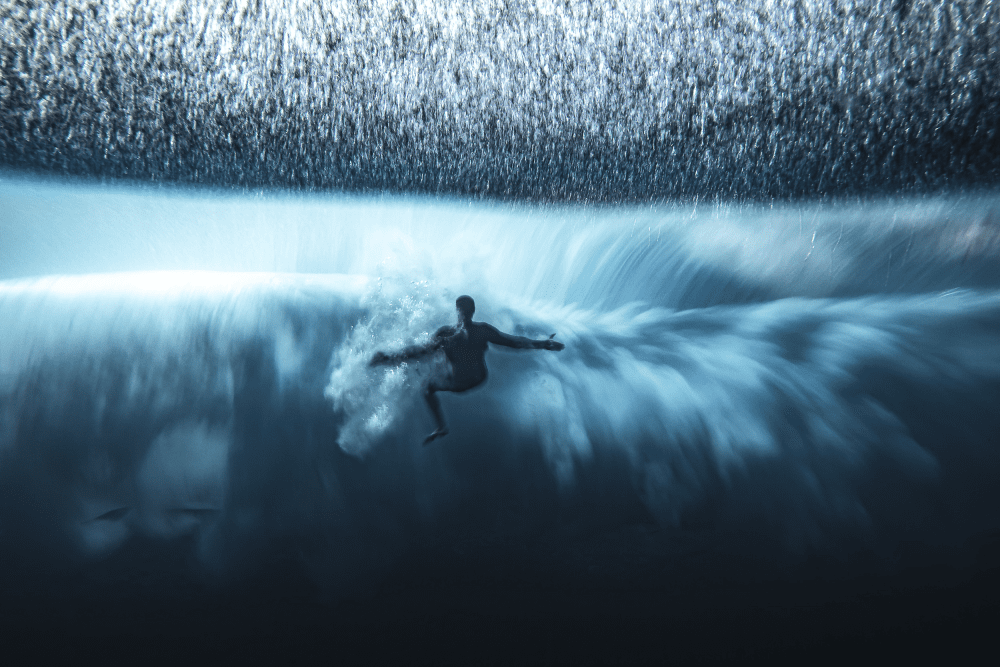
Ben Thouard’s surfer battle was the overall winner. Image credit: Ben Thouard, Ocean Photographer Of The Year
Overall Winner – Ben Thouard
A surfer battles with the underwater turbulence created by the “heaviest wave in the world” in Teahupo’o, which translates as “place of skulls”. French Polynesia
Surfers will relate to this year’s winning image, which shows someone who’s been wiped out being pushed beneath one of the heaviest waves in the world. “This is the unseen part of surfing,” said photographer Ben Thouard. “I have so much respect for both the wave and the surfers – surfing such a heavy wave is a huge challenge.”
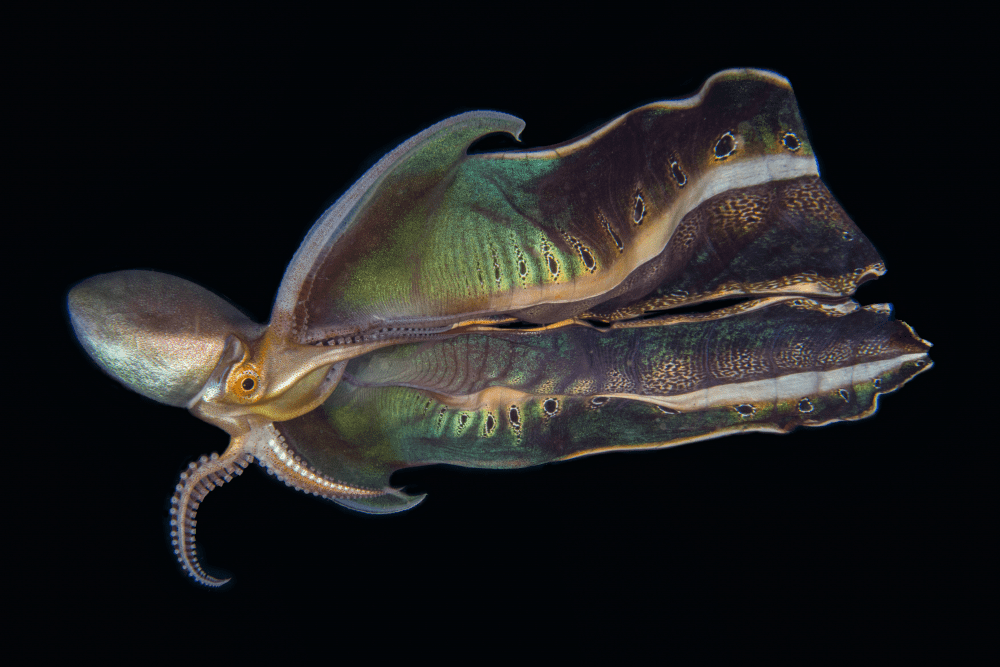
Don’t be fooled by its beauty. The blanket octopus packs an unusual shiv in the form of an amputated tentacle stolen from a toxic jellyfish. Image credit: Katherine Lu, Ocean Photographer Of The Year
Second place – Katherine Lu
A blanket octopus shows off its beautiful patterns and colors. Philippines
A blanket octopus was first seen alive by Dr Julian Finn of Museums Victoria, who said the species “illustrates the most extreme example of sexual size dimorphism in a non-microscopic animal.” A good point well made, it has to be said, considering that while an adult female can be around two meters long (6.6 feet), the male sits at a paltry 2.4 centimeters (0.9 inches) constituting the largest sex size discrepancy in the animal kingdom.
“I was very sick during this dive,” said second-place photographer Katherine Lu. “I spent a lot of time trying to equalise near the surface. When my guide frantically signalled for me to come down I hesitated for moment, but went for it, pushing myself down. Luckily my ears equalised and there before my eyes was this beautiful blanket octopus. We swam alongside her and then, like magic, she opened up her blanket to show herself in all her glory.”
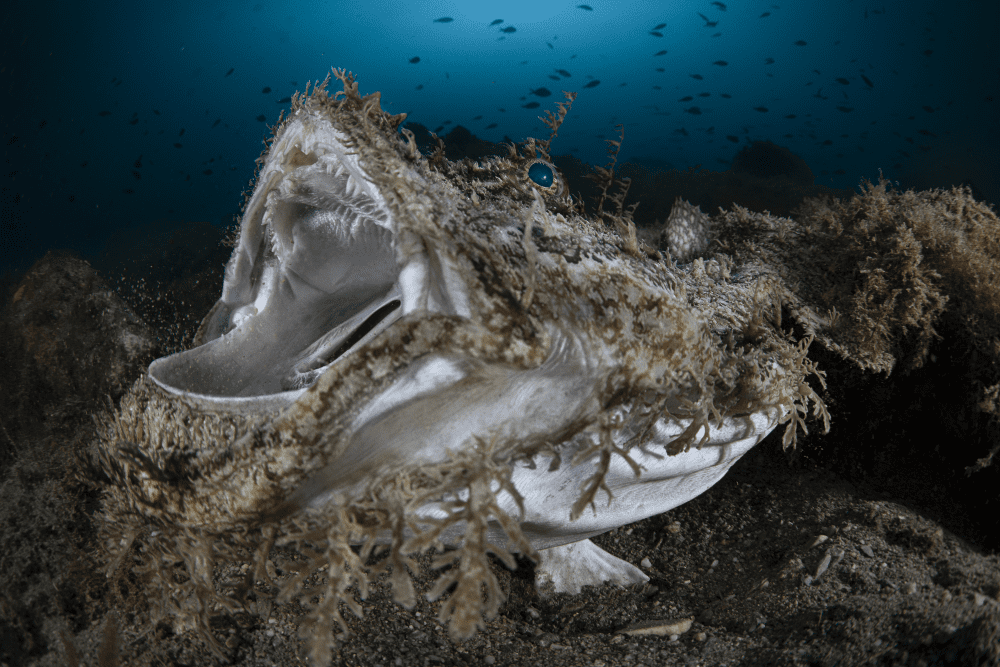
Whatever you do, don’t call it a wobbegong. Image credit: Massimo Zannini, Ocean Photographer Of The Year
Wildlife highly commended – Massimo Zannini
A goose fish feeds in shallow water. Italy
Fans of fish Twitter may recall the Great Goose Fish Wobbegong Scandal of 2021 when a viral Tweet was held to account by the aggrieved wobbegong community for wrongly ID’ing what looked like a potato that had been mashed on the seafloor. The tasseley animal in question was in fact a goose fish, not a wobbegong, which is the same animal that earned Zannini a spot in the Wildlife finalists.
“For the rest of the year it lives at near abyssal depths,” Zannini said. “This portrait shows the fish opening its mouth to catch a meal.”

Dead coral is an unfortunately common sight in our oceans. Image credit: André Musgrove, Ocean Photographer Of The Year
Conservation (Impact) highly commended – André Musgrove
A woman lies on the seabed, surrounded by fragments of a dead coral reef. Bahamas
As an underwater cinematographer, photographer, previous Ocean Photography Awards judge, professional freediver, and underwater stunt performer, it’s hard to pigeonhole André Musgrove. In his dominant role as an underwater photographer and cinematographer, Musgrove uses imagery to capture unique shots which tell a story.
“This photo shows how we have become engulfed by our own destruction as a result of poor climate change practices,” said Musgrove of his highly commended shot. “I wanted to bring attention to the issue of coral reef death due to both natural and human causes. With the rise of climate change, nations like The Bahamas have become increasingly susceptible to stronger hurricanes that have wreaked havoc on Bahamian islands.”
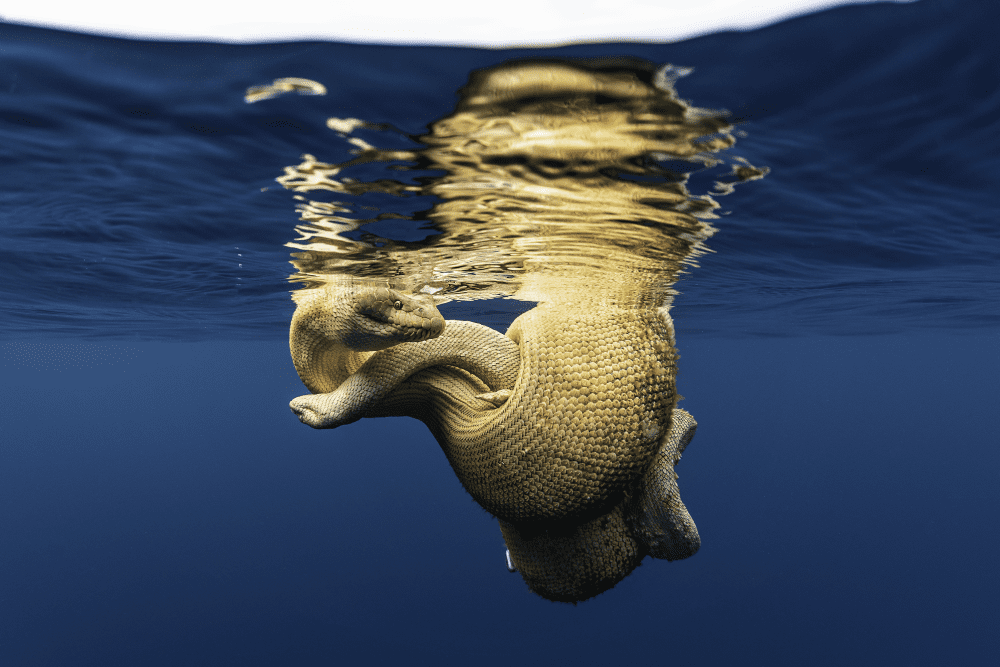
How many sea snakes can you see? Image credit: Brooke Pyke, Ocean Photographer Of The Year
Female Fifty Fathoms Award – Brooke Pyke
Portfolio. Western Australia
Among photographer Brooke Pyke’s winning portfolio is this confusing shot of what looks like a knot of sea snake. Peer a little closer and you may be able to discern that it is, in fact, two Stokes’s sea snakes mating. Pyke found the pair in waters off Western Australia, a photographing ground where she also snapped impressive images of manta rays, whale sharks, and humpback whales.
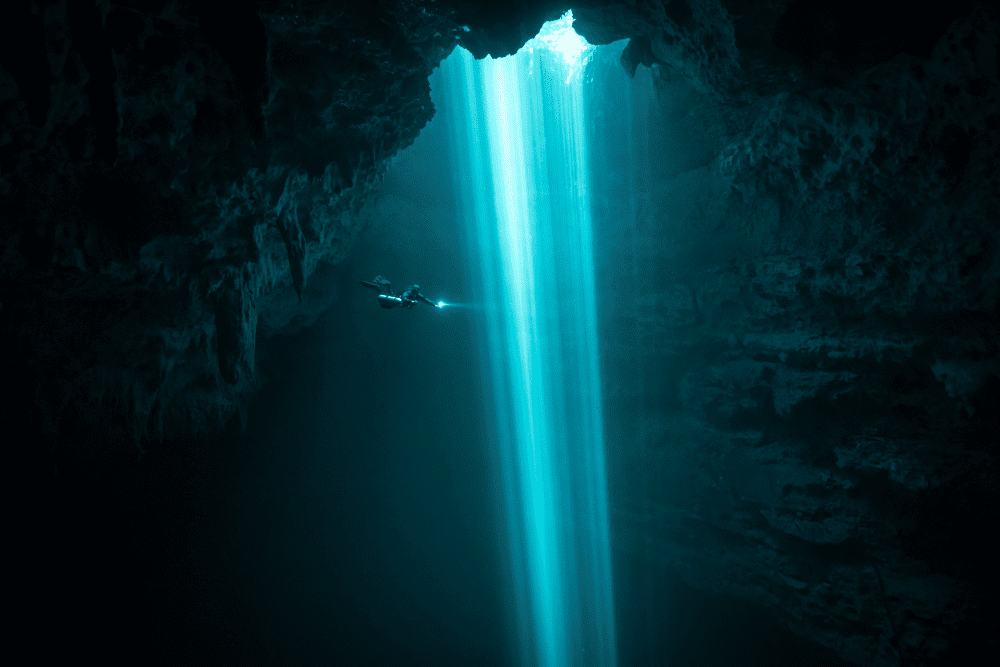
Light cutting through the water of a cenote makes for an otherworldly scene. Image credit: Brandi Mueller, Ocean Photographer Of The Year
Adventure highly commended – Brandi Mueller
A diver descends into the deep, light beams as their guide. Yucatan Peninsula, Mexico
“The massive sunbeams filtering into Cenote Azul Ha on this day were strong enough to light a diver and the cavern walls,” said photographer Brandi Mueller. “The clarity of the water makes it look as if the diver is floating in air, flying next to the light.”
You can learn more about the cenotes of the Yucatan Peninsula in next month’s issue of CURIOUS, IFLScience’s free e-magazine.
See more of the winning shots and finalists on the Ocean Photographer Of The Year 2022’s website, or find out more about the complexities of underwater photography from National Geographic explorer Bertie Gregory.
Source Link: See The Mesmerizing Winners From Ocean Photographer Of The Year 2022